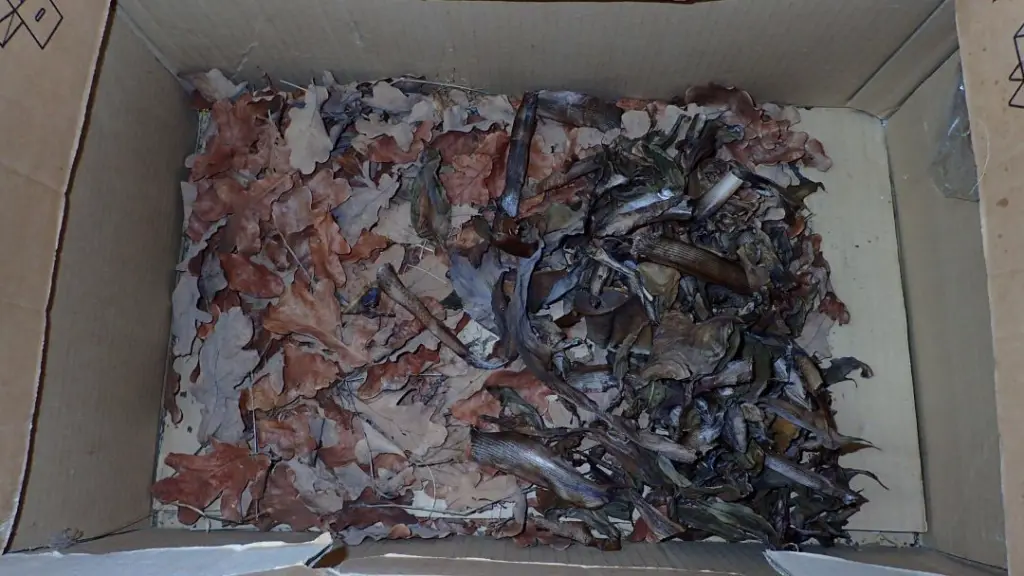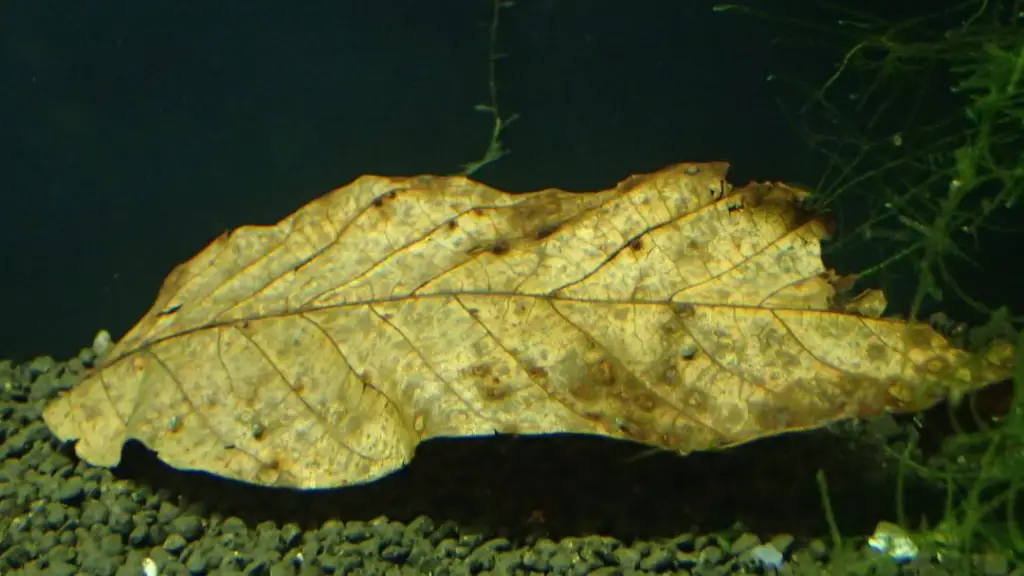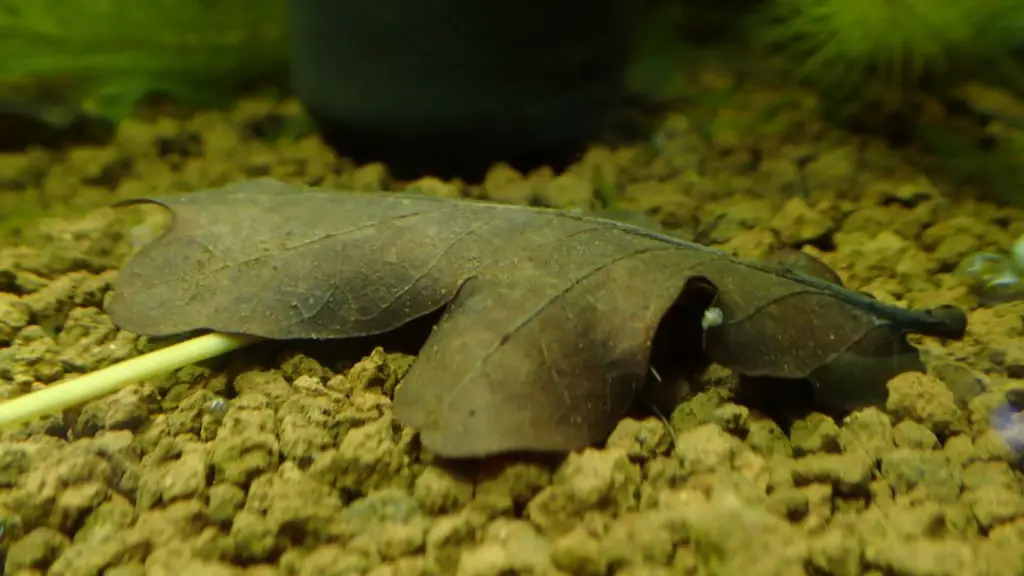Is something missing from your shrimp tank? Perhaps you’ve heard whispers in the shrimp-keeping community about leaf litter, but what exactly is it? Imagine a shrimp tank thriving with life, not just from the shrimp but from their environment. Could leaf litter be the missing ingredient to a more natural and vibrant habitat?
Leaf litter in shrimp tanks serves as more than decoration; it’s a functional addition that enhances the natural habitat, providing benefits like food, shelter, and water conditioning.
I remember the first time I stumbled upon the concept of leaf litter. My shrimp seemed happy, but I couldn’t shake the feeling that their environment was a bit sterile. I wanted to recreate a natural habitat that would mimic the wild and provide them with more than just a place to live.
The journey began with a simple question: “What is leaf litter, and should I be adding it to my shrimp tank?” The more I delved into it, the more I realized that leaf litter was more than just dead leaves; it was a thriving ecosystem within itself.
I faced challenges, of course. Finding the right type of leaves, treating them properly to ensure they were safe for my shrimp, and even dealing with the initial mess they created in the tank. But over time, I saw the transformation. The leaf litter became a self-sufficient food source, a hiding place, and even a tool to control water parameters.
Months turned into years, and the leaf litter became an integral part of my shrimp tanks. The shrimp were thriving, and the tanks looked more natural and alive. It wasn’t just about aesthetics; it was about creating a habitat that catered to the shrimp’s natural instincts and needs.

What are the benefits of adding leaf litter to a shrimp tank?
Adding leaf litter to a shrimp tank is like introducing a slice of nature into an artificial environment. The benefits are multifaceted and extend beyond mere aesthetics. Leaf litter creates a micro-ecosystem within the tank, providing a habitat that closely resembles the natural surroundings where shrimp thrive.
One of the primary benefits of leaf litter is that it serves as a self-sufficient food source. As the leaves break down, they become a breeding ground for microorganisms that shrimp love graze on. This supplements their diet and encourages natural foraging behavior, keeping the shrimp engaged and healthy.
Leaf litter also plays a vital role in water chemistry. Certain types of leaves, such as Indian almond leaves , are known to release tannins that can lower the pH and hardness of the water. This can be particularly beneficial for shrimp species that prefer slightly acidic or softer water conditions.
, are known to release tannins that can lower the pH and hardness of the water. This can be particularly beneficial for shrimp species that prefer slightly acidic or softer water conditions.
The physical structure of leaf litter provides additional advantages. It offers hiding spots and shelter, creating a sense of security for the shrimp. This is especially important for young and molting shrimp, who are more vulnerable and need a safe space to grow and develop.
Furthermore, leaf litter enhances the overall appearance of the tank, giving it a more natural and authentic look. It adds texture and complexity to the tank’s landscape, making it more visually appealing for the shrimp and the human observer.
In essence, leaf litter is more than just decorative debris; it’s a functional and beneficial addition that enriches the shrimp tank in various ways. It fosters a more natural, healthy, and engaging habitat, providing both tangible and intangible benefits that contribute to the shrimp’s well-being and the tank’s aesthetic pleasure.
It’s a simple yet profound way to bring a touch of the wild into the comfort of your home.

How can you properly prepare and introduce leaf litter into your shrimp tank?
Introducing leaf litter into your shrimp tank is not as simple as tossing a handful of leaves into the water. Proper preparation and introduction are vital to ensure that the leaf litter serves its intended purpose without causing any harm to the shrimp or the overall ecosystem of the tank.
The journey of leaf litter into your shrimp tank begins with the selection of suitable leaves. It’s essential to choose leaves that are free from chemicals, pesticides, and pollutants. Collecting leaves from a known and trusted source, such as an untreated garden or a reputable supplier, is a wise first step.
Once you’ve collected the leaves, the next stage is cleaning and treating them. Washing the leaves thoroughly under running water helps remove dirt and debris. Some shrimp keepers prefer to take additional measures, such as boiling or baking the leaves. Boiling helps release tannins and kills potential pathogens, while baking can sterilize the leaves without making them break down too quickly.
I like the simple method of just soaking the leaves for 24 hours before adding them.
After treating the leaves, it’s time to introduce them into the tank. But this is not a hasty process. Gradually adding the leaf litter allows the shrimp and the tank’s ecosystem to adjust to the new addition. Start with a small amount and observe how the shrimp react. If all seems well, you can gradually increase the quantity over time.
It’s also essential to monitor the water parameters, especially if you’re using leaves known to alter the water chemistry, such as Indian almond leaves. Keeping an eye on the pH and hardness ensures that the water conditions remain within the desired range for your specific shrimp species.
The placement of the leaf litter also matters. Strategically positioning the leaves to create hiding spots and foraging areas can enhance the shrimp’s experience and contribute to a more natural and appealing tank landscape.
Maintenance is the final piece of the puzzle. Over time, the leaves will break down, and new ones will need to be added. Regularly inspecting the leaf litter and removing any excessively decayed leaves helps maintain a healthy balance.
What types of leaves are suitable for use as leaf litter in a shrimp tank?
When selecting leaves for use as leaf litter in a shrimp tank, it’s advisable to choose brown leaves that have fallen off trees naturally. These leaves are typically free from chemicals and have reached a stage where they can benefit the shrimp most.
Among the suitable leaves that can be used are almond, oak, birch, and walnut leaves. These leaves are known for their beneficial properties, including the release of tannins, providing shelter, and serving as a food source.
By sticking to naturally fallen brown leaves from these types, shrimp keepers can create a more natural and thriving environment for their shrimp.

Are there any potential risks or challenges with using leaf litter in a shrimp tank?
While leaf litter offers numerous benefits to a shrimp tank, it’s not without potential risks and challenges. Understanding these can help shrimp keepers make informed decisions and take appropriate precautions.
One of the primary concerns with using leaf litter is the potential introduction of contaminants. Leaves collected from unknown or polluted sources may carry pesticides, herbicides, or other harmful chemicals. These substances can have detrimental effects on the shrimp and the overall health of the tank. Ensuring that the leaves are sourced from safe and untreated areas is crucial to mitigate this risk.
Another challenge is the alteration of water parameters. Certain types of leaves, such as Indian Almond Leaves, release tannins that can change the pH and hardness of the water. While this can be beneficial for some shrimp species, it might be undesirable for others. Monitoring and adjusting the water parameters is essential to maintain the optimal conditions for the specific shrimp being kept.
The decomposition of leaf litter can also pose challenges. As the leaves break down, they may create debris and cloudiness in the water. While this is a natural process and often beneficial, excessive decomposition can lead to water quality issues. Regular maintenance, including removing overly decayed leaves and monitoring water clarity, can help manage this aspect.
The aesthetic impact of leaf litter is a subjective but noteworthy consideration. Some shrimp keepers appreciate the natural appearance that leaf litter provides, while others may find it messy or unappealing. Finding the right balance between functionality and aesthetics is a personal choice and may require experimentation and adjustment.
Lastly, the potential for overuse or misuse of leaf litter should not be overlooked. Adding too many leaves too quickly or using inappropriate types of leaves can lead to imbalances and problems within the tank. A thoughtful and gradual approach, guided by observation and understanding of the shrimp’s needs, is key to success.
While leaf litter is a valuable addition to a shrimp tank, it comes with potential risks and challenges that require attention and care. Each step of the process holds potential pitfalls, from sourcing to introduction, monitoring to maintenance.
But with knowledge, vigilance, and a touch of artistry, these challenges can be navigated, turning leaf litter into a thriving and harmonious part of the shrimp tank. It’s a dance with nature, where understanding the steps and tuning into the rhythm can lead to a beautiful and enriching experience.

Conclusion (Leaf Litter in Shrimp Tanks):
In a nutshell, leaf litter plays a multifaceted role in shrimp tanks, offering benefits that range from nutritional support to aesthetic appeal. It’s a natural addition that can enhance the well-being of the shrimp and the overall vibrancy of the tank.
However, it’s not without its challenges and risks. Proper selection, preparation, and maintenance are key to harnessing the full potential of leaf litter without falling into potential pitfalls.
If you need any guidance or have questions about introducing leaf litter into your shrimp tank, please don’t hesitate to reach out. If you can’t find me here, check out aquarium shrimp keeping on Facebook. Happy Shrimp Leaf Litter Keeping!

FAQ Section
Q. Is leaf litter safe for shrimp?
A. Yes, leaf litter is generally safe for shrimp when sourced from untreated areas and properly prepared. It provides various benefits, including food, shelter, and water conditioning. However, care must be taken to avoid leaves from polluted sources or those treated with chemicals.
Q. What leaf litter is good for shrimp?
A. Several types of leaf litter are suitable for shrimp, including Indian Almond Leaves, oak leaves, mulberry leaves, guava leaves, maple, and beech leaves. The choice depends on the specific needs and preferences of the shrimp species being kept.
Q. What leaves can you put in a shrimp tank?
A. Leaves that are free from chemicals and pollutants, such as Indian Almond Leaves, oak, mulberry, guava, maple, and beech leaves, can be used in a shrimp tank. It’s essential to clean and treat the leaves properly before introducing them into the tank.
Q. Is leaf litter good for aquariums?
A. Leaf litter can be a beneficial addition to aquariums, especially shrimp tanks. It creates a more natural environment, offers hiding spots, serves as a food source, and can help control water parameters. However, it requires proper selection, preparation, and maintenance.
Q. Does leaf litter affect pH?
A. Yes, certain types of leaf litter, such as Indian Almond Leaves, release tannins that can lower the pH of the water. This can be beneficial for some shrimp species but may require monitoring and adjustment to maintain the desired water conditions.
Q. What is toxic to aquarium shrimp?
A. Substances such as pesticides, herbicides, heavy metals, and certain chemicals can be toxic to aquarium shrimp. Additionally, some types of leaves, like pine or eucalyptus, may contain substances that could be harmful to shrimp. Care must be taken in selecting and preparing anything introduced into the shrimp tank to avoid potential toxicity.
